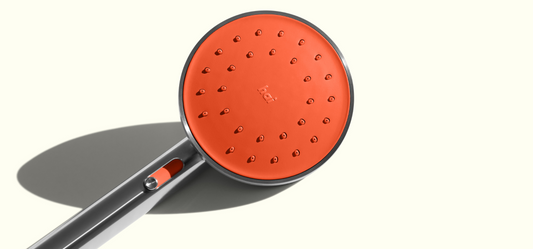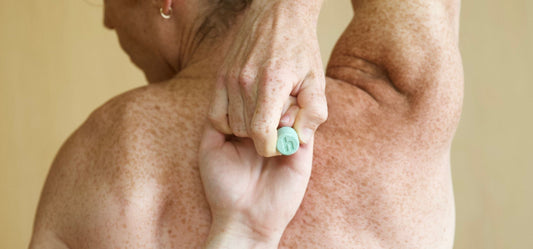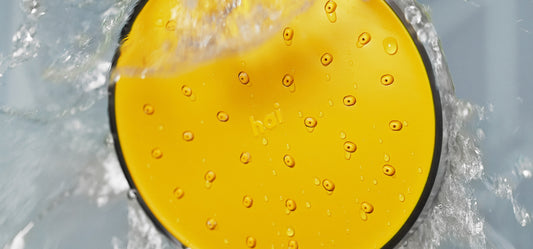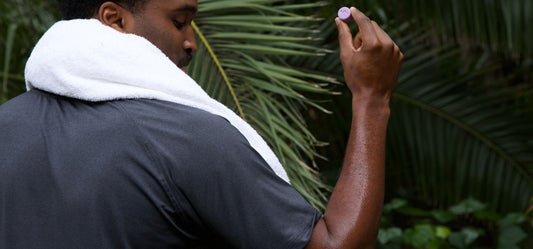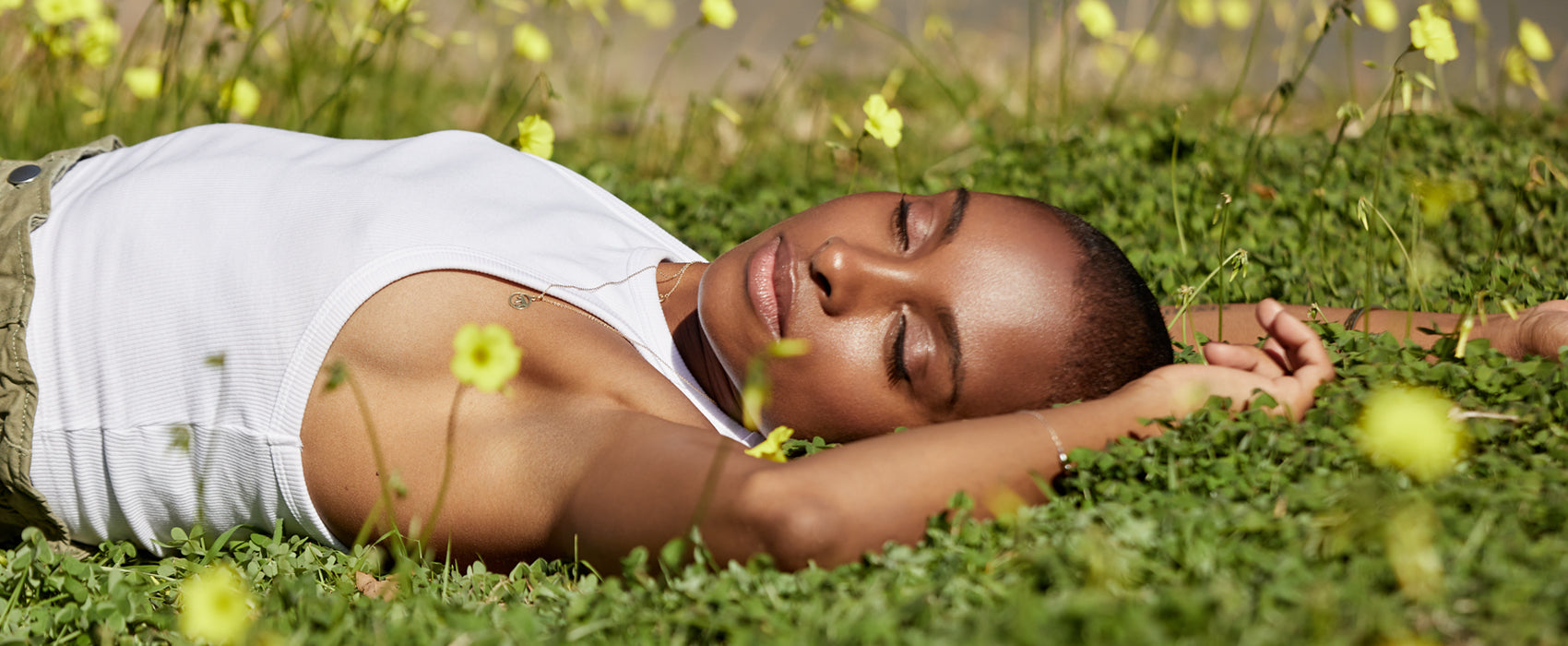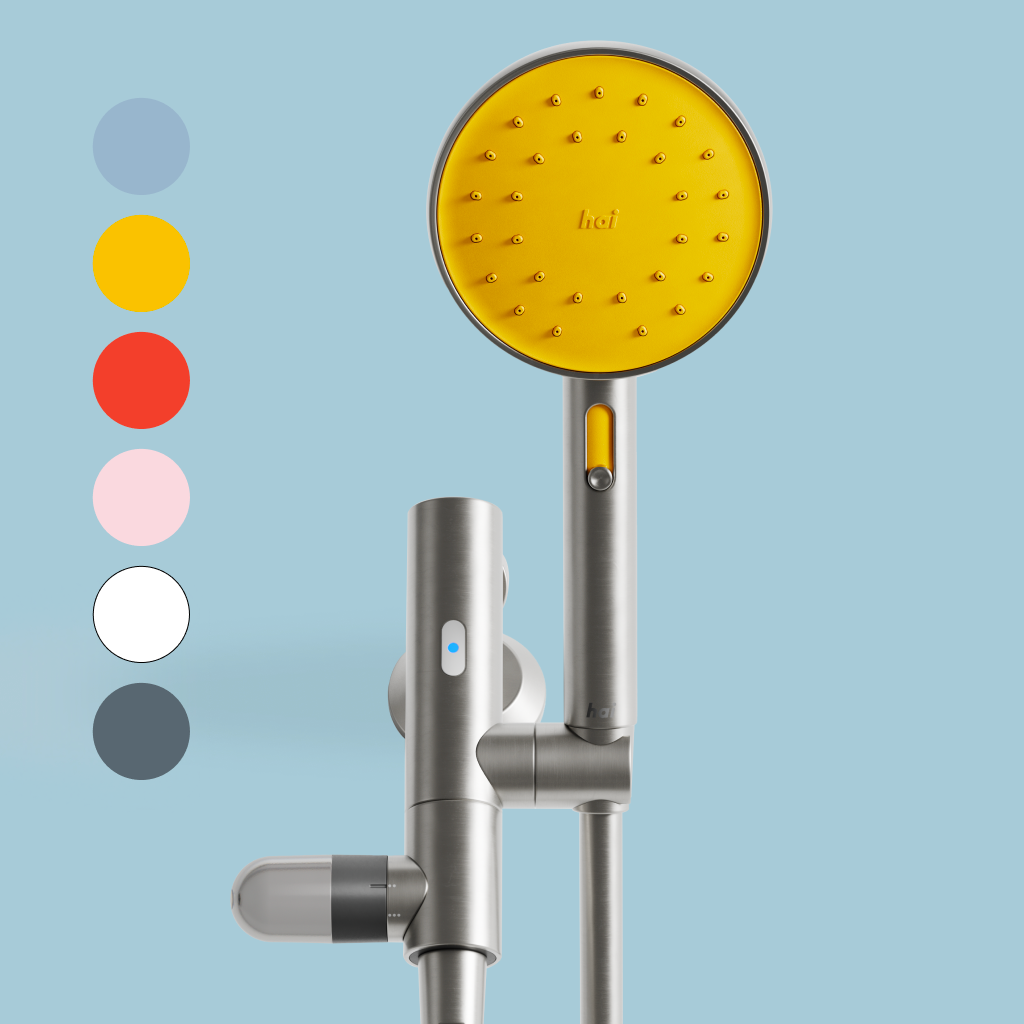Pressure points to release stress and improve your digestive system.
Acupressure is an ancient form of healing that uses pressure on certain points of the body to improve mental and physical well-being. It has been used for centuries in Asia and other parts of the world and is now gaining popularity in the United States.
Learn how you can add this ancient practice to your pre- or post-shower self-care arsenal to promote relaxation and wellness.
What is acupressure and how does it relate to traditional Chinese medicine?
Acupressure has its roots in traditional Chinese medicine (TCM). TCM theory is based on the idea that there are 12 main energy pathways, called meridians, which connect the many vital organs of the body and allow life force ("qi" or "chi") to flow. If the flow of qi becomes blocked in any of these meridians, it can lead to discomfort or disease. Common TCM techniques include herbology, acupuncture, cupping, and acupressure.
Acupressure helps unblock stuck qi and restore balance and harmony by using physical pressure on acupoints, a network of more than 400 points throughout the body. The most commonly used are on the hands, feet, head, and ears.
How does acupressure work?
Acupressure practitioners apply consistent pressure to points on the body using their fingers, palms, elbows, or feet (or devices such as acupressure balls). Each point affects other systems of the body to achieve a range of goals. Similar to other types of bodywork, this pressure helps ease muscle tension, increase blood flow and circulation, and promote deep relaxation.
You can also perform acupressure on yourself at home. This can be a great way to unwind after a long day or to ease discomfort.
What are the benefits?
While more rigorous research is needed to verify the benefits of this ancient practice for various health conditions, some people report pressure to specific acupressure points may:
- Reduce stress and anxiety
- Relieve pain from headaches, neck pain, and back pain
- Increase energy levels
- Improve digestion
- Ease menstrual cramps
- Relieve nausea from chemotherapy
- Boost immune system
- Improve overall health
Are there any risks?
Acupressure is generally considered safe for most people. It's important to be aware that applying pressure to some points on the body may result in discomfort or pain. If this happens, move your hand or foot to a different acupoint and apply pressure more gently.
You should avoid acupressure if you have open wounds, bruises, or skin infections in the area you wish to treat. It's also important to consult your doctor for professional medical advice before trying acupressure if you are pregnant or have a medical condition such as cancer, heart disease, rheumatoid arthritis, bleeding disorders, or varicose veins.
How do I perform acupressure on myself?
Here's how to get ready for your at-home acupressure session:
- Put away any distractions.
- Apply firm pressure or gently massage each acupoint for 2 minutes. You should feel tension, but it shouldn’t hurt.
- Take deep breaths throughout the process.
- Repeat the process for each acupressure point in your routine.
While it's generally safe to perform acupressure on yourself, please read the risks above before working with any of your body's pressure points.
What are common acupressure points?
As we mentioned, there are over 400 acupressure points on the human body, but here are a handful of points that are most commonly used to relieve stress and improve digestion.
The liver 3 pressure point (L3)
Also called: happy calm, great surge
In TCM, the liver's job is to smooth the energy flow throughout the body. If the liver doesn't do its job, you might feel frustrated, anxious, or tense. Think about how your stomach might feel like it’s tied up in knots when you’re angry, irritable, or generally stressed.
L3 is ideal for tackling those kinds of digestive issues. Apply pressure to improve your mood and deal with an upset stomach. You can find it on the top of your foot. It’s located about an inch down from the point between your first toe and your second toe.
The heart 7 pressure point (H7)
Also called: the outer gate point
One of several useful hand pressure points, h7 is said to be where the spirit enters and leaves the body. It's located on the inner wrist, in the hollow in line with the space between your pinky and ring finger.
Applying pressure to this point may help alleviate stress, anxiety, heart palpitations, and insomnia. This is a great pressure point to use if you’re feeling sluggish or run down.
The large intestine 4 point (LI4)
Also called: the hand valley point
This acupoint is located in the webbing between your thumb and index finger. It's said to be one of the most effective points for relieving pain, so it's often used to ease headaches, toothaches, and menstrual cramps. Applying pressure to this point may also help improve digestion.
The pericardium 6 point (P6)
Also called: the inner gate point
P6, or the inner gate point, is located inside the forearm. It takes a little more effort to find the inner gate acupoint, which is a bit below your wrist crease. To find it, hold your hand up with your palm facing up. Now place the first three fingers of your other hand across your wrist horizontally. Place your thumb right below your index finger. That’s the spot.
Use the inner gate for stomach pain, nausea, or vomiting. You can also use an acupressure wristband. They’re said to relieve the symptoms of motion sickness by stimulating this point.
The governor vessel 24.5 point (GV24.5)
Also called: the third eye point
The third eye pressure point is between your eyebrows, right above the bridge of your nose. It's sometimes referred to as the "mind's eye" because it's said to help improve mental clarity and focus.
Applying gentle pressure to this point helps if you’re feeling headaches, eyestrain, and sinus pain. It's also a useful point for reducing stress and anxiety.
Now that you know a few pressure points and what they're good for, it's time to find a routine that works for you. Remember, there are many acupressure points on the human body. So, if you don't find relief with the points we've listed here, don't give up! There are plenty of others to try.
Learn more about bringing your health into balance.




